Sometimes, you need to travel to a place that has absolutely nothing to do with the same-old, same-old; a place where the landscape, the climate, the food, the architecture—the everything—conspire to blast you into another realm where every moment is a revelation.
No, we’re not sending you on an ayahuasca retreat (unless, of course, that’s what you want to do…no judgment here!). Instead, we’re suggesting you spend a week or two in Vietnam for a true trip of a lifetime—the kind of travel that immerses you in vistas and experiences so different from your daily life that you feel as if you are dreaming.
In November, NextTribe is taking a small group of women to explore the delights of North Vietnam. Find out all the details here and join us for fun, beauty, and friendship.
Vietnam will surround you with its gorgeous terraced rice fields, ancient temples, and nonstop cities—not to mention the irresistible scent of street food wafting past you. You’ll learn about its history, culture, arts, cuisine, and meet the wonderful, welcoming people who call it home.
Here, we’ll highlight some of the most important facts about Vietnam and best places to visit. This includes insight from our resident expert on Vietnam, Ann Hillers, who leads NextTribe’s trips to this region.
Read More: Warm People, Jaw-Dropping Scenery: Why I Love Vietnam
Overview of Vietnam: Some Ground Rules
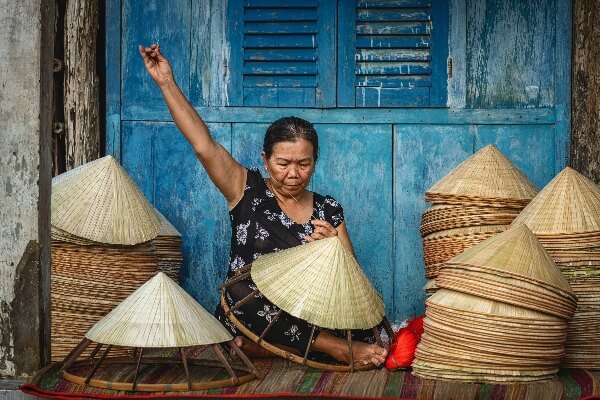
If you’re an American of a certain age, the mention of Vietnam may bring up memories of the divisive war that defined the Cold War era. Yes, its history has been tumultuous, but today Vietnam (the north and south have been unified since the mid-1970s) welcomes travelers to explore their diverse communities and traditions.
Typically, northern Vietnam (where NextTribe loves to explore) is considered to have a slightly more chill vibe, while southern Vietnam is known for the dynamic energy of Ho Chi Minh City. Both have plenty of natural beauty to make for an unforgettable trip, however.
Best Time to Travel in Vietnam
The weather in northern vs. southern Vietnam can vary, too, which impacts the best times to travel to Vietnam. Northern Vietnam is probably the more familiar, with four seasons, for those traveling from the United States. There’s the possibility of snow in the winter and hot days in summer that have you reaching for the signature iced coffee made with condensed milk (more on that later). That’s why many travelers like to head there in spring and fall.
In southern Vietnam, however, you’ll have a much more tropical (translation: humid) climate, as you may find in other areas of Southeast Asia. There’s a rainy season stretching from May to November, and July and August potentially have the kind of storms that are not so wonderful for travelers trying to see the sights. In other words, you’ll probably want to go in winter or early spring.
Getting Around Vietnam
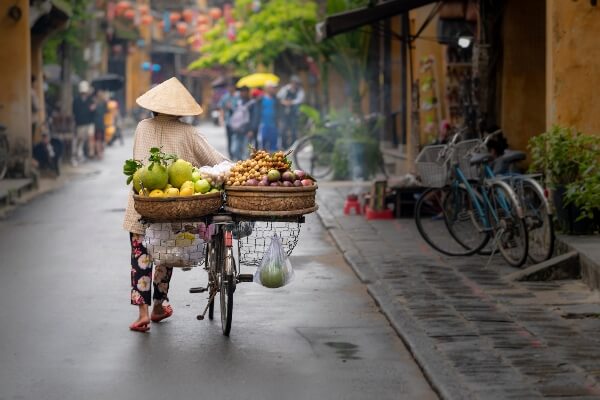
Private van, foot, bike, motorcycle? All are possible when touring Vietnam. When part of a group, you’ll likely have a bus or van hired that will whisk you around. In Hanoi and Ho Chi Minh, you can easily walk—everywhere! If you’re a daredevil badass, you can hire a motorcycle to take you from place to place—seriously, you can get one via Uber. That’s certainly one way to live like a local.
Hiring a driver with a more sedate car is also very reasonable. It can be a great way to take a day trip and have the flexibility to schedule your own stops. A driver is typically about $50-60 for a day so it can be a pretty efficient and affordable way for people to get around, especially if you’re traveling with one or a few others.
The Vietnamese People
If you’re walking and lose your way, don’t hesitate to ask for directions. People in Vietnam, to the extent one can make this kind of sweeping statement, are warm, generous, and eager to practice their (excellent) English.
Nowhere will you feel more welcome. The Vietnamese are quintessentially kind.
“Nowhere will you feel more welcome, nor feel more like your preconceptions shaped by old movies and the war-era press are wrong. The Vietnamese are quintessentially kind,” says Hillers.
Major Cities in Vietnam: Spotlight on Hanoi
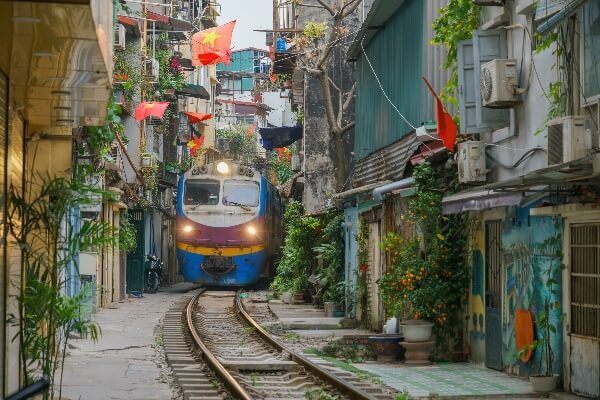
Located on the banks of the Red River, Hanoi is an incredible city, the capital of Vietnam. It has stunningly preserved, ancient pagodas and colonial buildings. But don’t think it’s a tranquil, old-fashioned town: Hanoi is a sea of energy and a hive of activity. No one sits still, and you’ll see soaring, glass-clad office towers as well as remnants of centuries past.
One of the best ways to get acquainted with this magical city is by walking around—there’s no experience quite like navigating its narrow streets, alleyways, and lively markets.
Grab a cocktail at a rooftop bar (try the Peridot Grand Boutique Hotel) in bustling Old Town for a bird’s-eye view of the lights of Hanoi after dark. After a long flight, that can be a great way to drink in the sights and sounds of Hanoi.
If you’re game to get up early, stroll by Hoan Kiem Lake to see the locals practicing tai chi and ballroom dancing or perhaps playing chess. On the weekends, the streets ringing the lake are open only to pedestrians, which can give you a wonderful opportunity to get your steps in under leafy trees without traffic.
History buffs may want to visit the infamous “Hanoi Hilton” (Hoa Lo prison), where the late John McCain and others were held at the time of conflict. Dating to 1890, the butter-yellow building is located in the French quarter of the city. For those who came of age during or soon after the war, it’s an unmissable opportunity to connect with the headline news of one’s youth.
Sculptures, pavilions, pillars, bronze bells, ancient trees, manicured hedges—you’re definitely not in Kansas (or anywhere in the US) anymore.
Of course, you love reading, right? So don’t miss the historic Temple of Literature, dedicated to students of Confucius. This walled compound, with its five separate courtyards, housed students beginning in the year 1000, and it’s spectacular. Sculptures, pavilions, pillars, bronze bells, ancient trees, manicured hedges—you’re definitely not in Kansas (or anywhere in the US) anymore.
Another terrific spot when exploring Hanoi: The Women’s Museum of Vietnam, which aims to promote gender equality. Exhibits highlight the sometimes-hidden true stories of the roles women have played in everything from the country’s many military conflicts to its commerce.
We’d be remiss if we didn’t mention the Imperial Citadel of Thang Long. It’s a UNESCO World Heritage site and for good reason: For 13 centuries, it was the area’s seat of power, and the complex (some sections date to 1010) is of course typically a crowded attraction, but worth a visit. While in the area and doing touristy things, you may want to pop into the 50-minute water puppet show at the Thang Long Water Puppet Theatre – it gives you a dose of Vietnamese culture and is unlike anything you’ll encounter at the multiplex back home.
The store Collective Memory stocks unapologetic Vietnamese kitsch as well as home decor.
Of course, when you’re in Hanoi, you’re probably going to want to shop and snap up some local wares. A few best places to shop in Hanoi: Pop into Collective Memory for some unapologetic Vietnamese kitsch as well as home decor. We love their mugs and potholders with turn-of-the-century imagery. Looking for something fun to wear? Tired City stocks t-shirts and hoodies with original artwork by local graphic designers. Also check out Lennin, a skateboard brand, to see what the cool kids in Hanoi are wearing (and maybe rev up your own wardrobe with a new piece of two).
Now, about hiring a car as we mentioned previously: You might want to do that while in Hanoi and travel just 30 minutes away to visit the Bat Trang Pottery village. It’s an top-notch way to get a taste of centuries-old craft traditions. You can explore the village and pottery market and visit the temple where villagers pray to the pottery.
Best Street Food in Vietnam: What to Eat
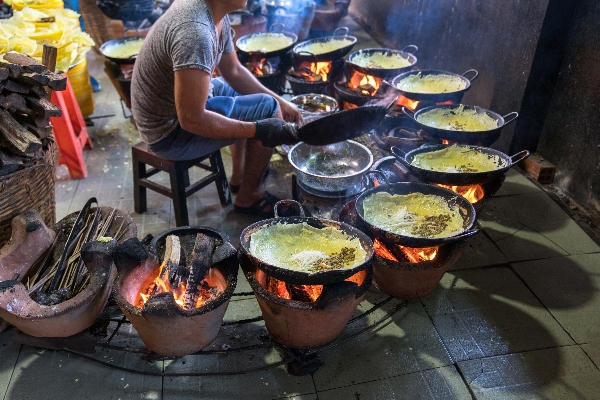
It goes without saying that you’re going to eat your way through Vietnam. It’s one of the most revered spots for fantastic food, especially street food and grab-and-go food; no need to look for a white-tablecloth place that requires reservations. Carts, stalls, drop-in spots all serve incredible food; the streets are filled with enticing smells, from charred meats to savory soups bubbling. Pull up a little, low-slung plastic stool like everyone else does, and dig in.
Let’s take a closer look at the yummy Vietnamese food you’ll find in Hanoi. It’s a great jumping off point for what you’ll eat elsewhere, too. You could pop into Pasteur Street Brewing for some fantastic local beer, like the Jasmine IPA or the Passionfruit Wheat. Around the corner at 57 Ly Quoc is perhaps the best banh mi in town. What’s a banh mi? A sandwich on the crispiest French bread with either pork, chicken, egg, or paté, which is then topped with cilantro, shaved carrots, and condiments—absolutely addictive.
Bun cha is like a delicious, deconstructed soup: broth, a plate of noodles or meatballs, some fried spring rolls to dip in the broth, plus condiments and a pile of greens.
You’ll have plenty of delicious options in Vietnam, whatever your palate may be. Ann Hillers says Pizza 4Ps is a real treasure: “Silly name, but they have divine pies, crab curry pasta, and Western-style salads. It’s a must.”
Don’t skip bánh xèo (pronounce it “bahn oh”): crispy, thin fried rice pancakes filled with some combo of shrimp, pork, bean sprouts, and scallions. You’ll get an array of dipping sauces once you get your pancakes rolled up. Go ahead, try them all; dishes tend to be $1 to $3 a pop.
And to fuel you as you trek around down, there are those Vietnamese iced coffees—bracing, bitter, rich, and sweet, thanks to the combo of espresso and condensed milk.
Exploring Ninh Binh
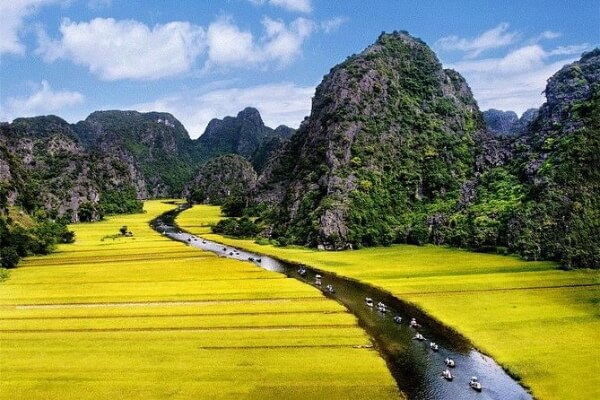
Now, to distract you from your cravings to try all of these foods right now, let’s get back to the best places in Vietnam. Ninh Binh, a 90-drive south of Hanoi, is worlds away. Tucked in the countryside, Ninh Binh is an Eden for nature lovers and a playground for adventurers, says Hillers, who loves to take her NextTribe in Vietnam groups here. “Vietnam’s first capital was established here, and today the area is a protected UNESCO World Heritage Site,” she says, “full of mossy pagodas, striking limestone karsts, and surreal landscapes.”
At Ninh Binh Bich Dong Pagoda, the mountain is reflected in the mirror-like water, creating an emerald glow around the pagodas.
In particular, she’s fond of Hang Mua, a stunning cave, and the Hua viewpoint. Yes, it’s at the top of a steep mountain, but the views are worth the 500 steps up. On a clear day, you can see a crazy quilt of green rice fields and rivers snaking through the landscape. If you find yourself surrounded by an otherworldly mist, wait a bit, and you should be rewarded with a magnificent view of the Tam Coc valley.
You’ll also want to visit Ninh Binh Bich Dong Pagoda, which dates to 1428—almost eight centuries old and one of Vietnam’s most iconic sights. It’s a complex of three structures which emerge from the cliff face. The name Ninh Binh Bich Dong Pagoda translates to Pagoda of the Emerald Grotto. You’ll understand why as you enter: The mountain is reflected in the mirror-like water, creating an emerald glow around the pagodas.
Just beyond the gate is a tranquil courtyard and a traditional Buddhist temple. Follow the stairs up and around the mountain for stunning views (you remembered to wear good walking shoes, yes?), then look for two other temples embedded in the mountain. Some of Ninh Binh’s best scenery can only be accessed by boat, so consider taking a paddleboat tour in Trang An. Gliding along the gentle current, in the shadow of enormous, jungle-covered karsts, the boats stop at temples and drift underneath grottoes along the way.

Ha Long Bay: A Favorite Place in Vietnam
If you leave Ninh Binh and travel northeast towards Ha Long Bay (also known as Halong Bay), you’ll be rewarded with its amazing landscapes: tranquil waters and thousands of towering limestone islands topped by rainforests. Ann Hillers recommends a stop in Yen Duc, one of the villages in the Red River Delta that still retains its authentic lifestyle. The local people’s lives revolve around rice cultivation and farming activities. As you pass through the village, you’ll see traditional houses and gardens, as well as locals working on their farms.
For a deeper dive into this area, you might consider heading to the bay itself for a cruise lasting a couple of days. This can you out kayaking to a cave and trying other activities (squid fishing, anyone?).
The Rice Paddies of Vietnam
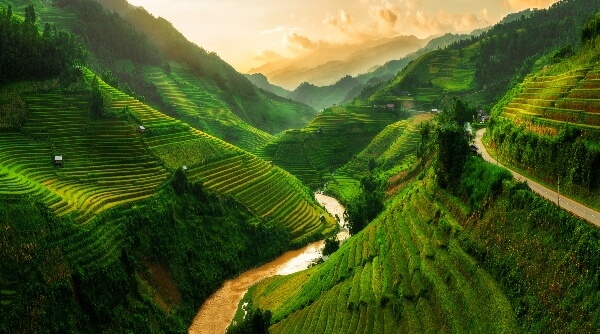
Another intensely memorable sight in Vietnam: its lush rice paddies. While rice is often grown in flat fields in the southern part of Vietnam, it’s here in northern Vietnam that you find scads of these mesmerizing, serpentine terraces that will have you taking dozens of photos. Sapa, for instance, is one of the most photogenic areas; primetime to visit is March to May, though avoid the rainy months of June through August.
Landscapes don’t get much more spectacular than Sapa. Here’s how Hillers describes it: “Enticing ribbons of road lead the eye down to the valley floor, white-water rivers rush among rice fields, and lush green mountains stretch into the distance as far as the eye can see.” The highest peak in the region, Mount Fansipan, crowns the ragged ridge line high above town. Nestled in the misty mountains, this rice terrace region is quite different from the rest of hot, humid Vietnam.
Enticing ribbons of road lead the eye down to the valley floor, with white-water rivers rushing among the fields, and lush green mountains as far as the eye can see.
Pit-stop at the local market in Sapa: It’s open daily—don’t miss the unique brocade products in vibrant colors and subtle patterns of the Hmong, Dao Do, and Giay, three of the country’s ethnic minorities. For those who want a richer experience, you can visit more of the local markets in Sapa. Some to consider are the Bac Ha Market on Sundays (you’ll typically see hundreds of traders decked out in traditional colorful garb; get ready to haggle). What to look for? The Hmong textiles, whether bolts to use as a tablecloth or a shirt that could be framed and hung as artwork. Also check out the Can Cau Market on Saturdays, and Coc Ly Market on Tuesdays.
Feeling especially adventurous and craving more views of rice terraces? Consider visiting the remote area of Ha Giang, which many believe has the ultimate vistas of rice paddies in Vietnam. In this rural area, you’ll also see charming villages and nonstop mountains.
Best Places to Travel in Central Vietnam
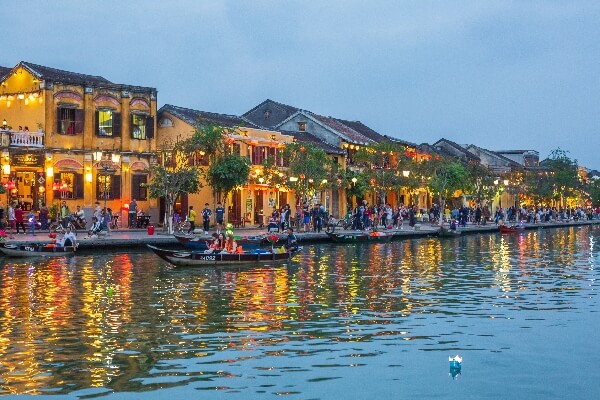
If you head south, you’ll travel through Central Vietnam, home to the Marble Mountains, dotted with caves and shrines; Da Nang, an old French port city with beautiful beaches; and the ancient town of Hoi An, with its mix of French Colonial architecture and Chinese shophouses—and, yes, more great beaches.
At the fish market in Hoi An, you’ll see boats coming in, their nets laden with tiny silver fish and other aquatic creatures.
Hoi An is a wonderful little walkable town, sited on both the river and the ocean (translation: total natural paradise). You’ll find the streets lined with loads of tailors, leather crafters, and a great dining scene. On the way to Cau Dai beach, stop at a great place for a bite to eat: Son Hoi An. “It’s small and open-air (some tables have a view of the river across the street),” says Hillers. “The service is slow, the menu limited, but the food is really great!” Pho, smoked duck, and pork in a clay pot are a few of the specialties.
The fish market at dawn outside of Hoi An is quite the experience. The boats come in, their nets laden with tiny silver fish and other aquatic creatures. It’s mostly women arriving to shop and haggle; once they’ve settled on their purchase, they hop on motorbikes and take off through the rice paddies with big bamboo baskets full of fish—or even one huge fish simply strapped on the back of the bike. Watching all this unfold isn’t typical tourist terrain, but exactly what makes traveling in Vietnam so magical.
Ho Chi Minh: Southern Vietnam’s Hotspot
As you head towards the tip of Vietnam, there’s no avoiding the gravitational pull of Ho Chi Minh City, formerly known as Saigon and a live wire of a metropolois. With a population of more than nine million, this urban center can be a mind-blowing place to visit. There are spectacular historical sites that are must-see destinations. For example: Notre Dame Cathedral (built by the French with bell towers soaring almost 200 feet high), the nineteenth-century Central Post Office (a grand lemon-lime façade and equally spectacular interior—time for some selfies), the Saigon Opera House, and the Jade Emperor Pagoda, and jaw-droppingly ornate temple (Statues! Tiles! Wood carvings!).
Check out the indie shops in District 1—old office and apartment buildings have found new life housing boutiques, bookstores, and more. The exterior of once-abandoned structures may be adorned with colorful signs, lights, and lanterns, making them magnets for local youth. Visit 22 Lý Tự Trọng and 42 Nguyễn Huệ.
As you head towards the tip of Vietnam, there’s no avoiding the gravitational pull of Ho Chi Minh City.
Exploring the Chinese Quarter (Cho Lon) can be an amazing way to spend an afternoon—it’s a walkable area and shows you another facet of life in Vietnam. Time-worn temples, the bustling, bursting-with-color Binh Tay Market, and the 100+-year-old Hao Si Phuong alley, with a fascinating (and very photogenic) mix of houses.
While in Ho Chi Minh City, of course, sample the craveable dishes we’ve already raved about. Also keep an eye out for Cơm Tấm, or broken rice (once considered “poor man’s rice). It’s exactly what it sounds like: soft, fluffy broken rice grains, topped with barbecued pork (or another protein), scallion oil, pickled veggies, and cucumber, with a fried egg on top. Perfect with cold beer.
One note for beach lovers in southern Vietnam: Nha Trang is a beloved resort town, with endless beaches, turquoise waters, and all kinds of diving opportunities. If you’re dreaming of some time in or by the water, you may want to detour there for a night or more.
The Magic of the Mekong Delta
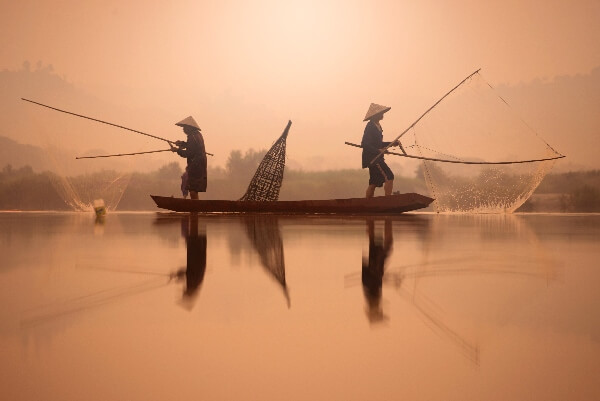
About 120 miles further south from Ho Chi Minh City is the Mekong Delta, another of the best places to visit in Vietnam. Here, the land dissolves into a jigsaw of rivers, swamps, and islands.
To get around the Mekong (also sometimes written Me Kong) Delta, boats are the main means of transportation. Day trippers and overnight visitors can spend time paddling and visiting Khmer pagodas. Cần Thơ, the largest city in the Mekong Delta area, is home to the Cái Răng floating market. You can find a boat to take you there and watch the boats, packed with fruits like rambutans and mangosteen, slip by.
In the Mekong Delta, the land dissolves into a jigsaw of rivers, swamps, and islands.
Sóc Trăng is another of the area’s great places to check out; it’s home to the largest population of Khmer people outside of Cambodia, giving it a unique multicultural feel. You’ll find the intricate Clay and Bat pagodas, revered as examples of Khmer culture.
Which underscores that—from its far northern reaches to its southern shores 1,000 miles away—adventure, beauty, and fresh experiences await in every corner of this astounding country.
Read More: My Great, Humbling Mongolian Adventure on Horseback

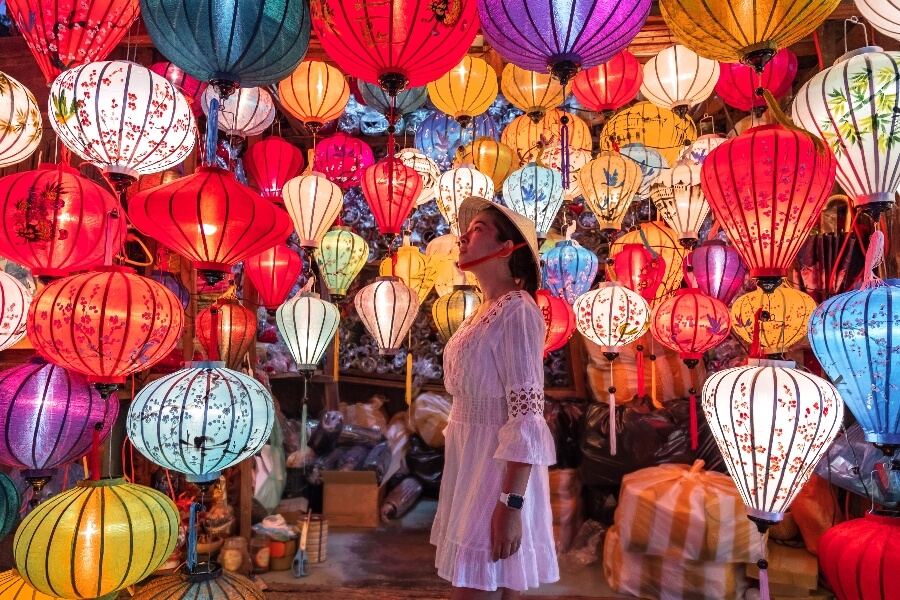
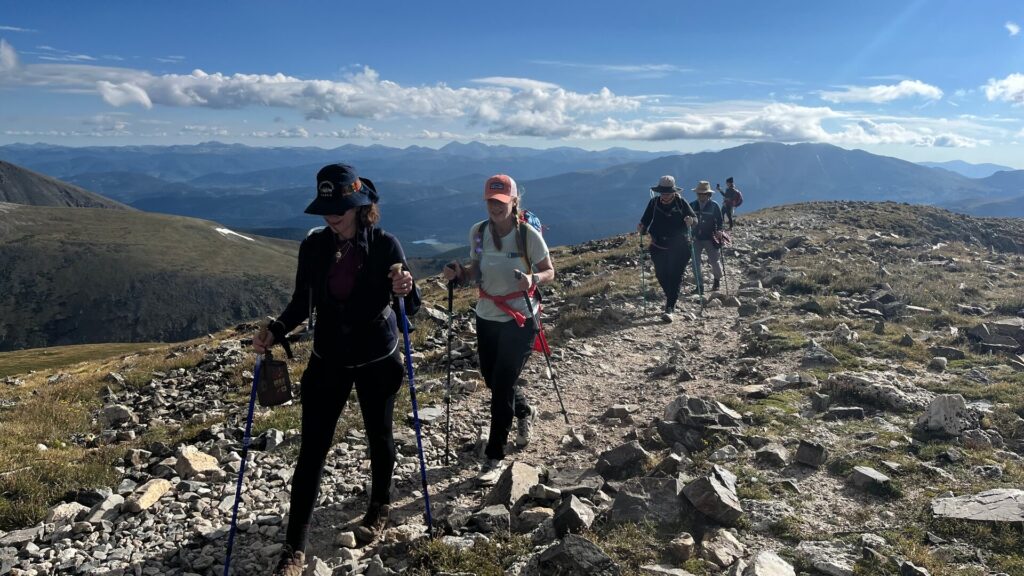



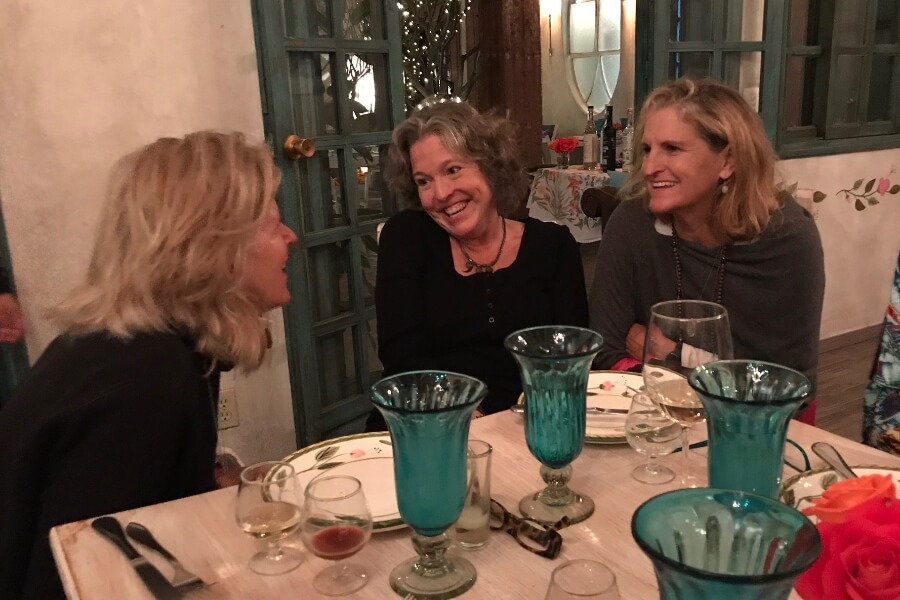

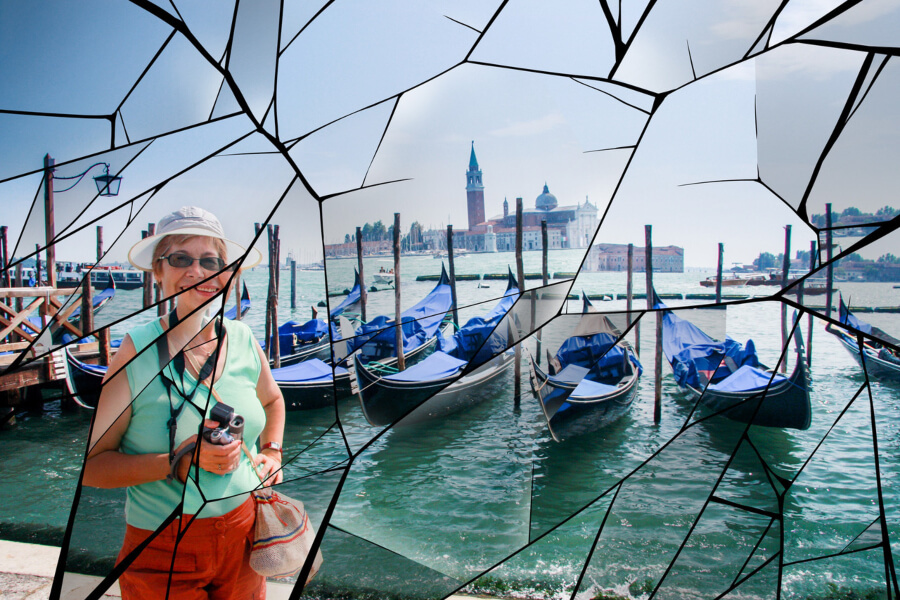

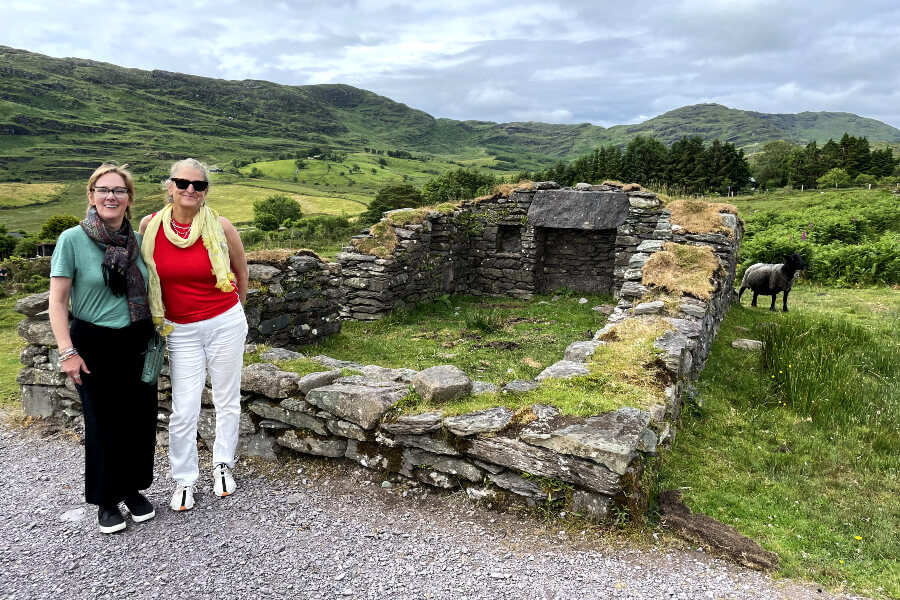
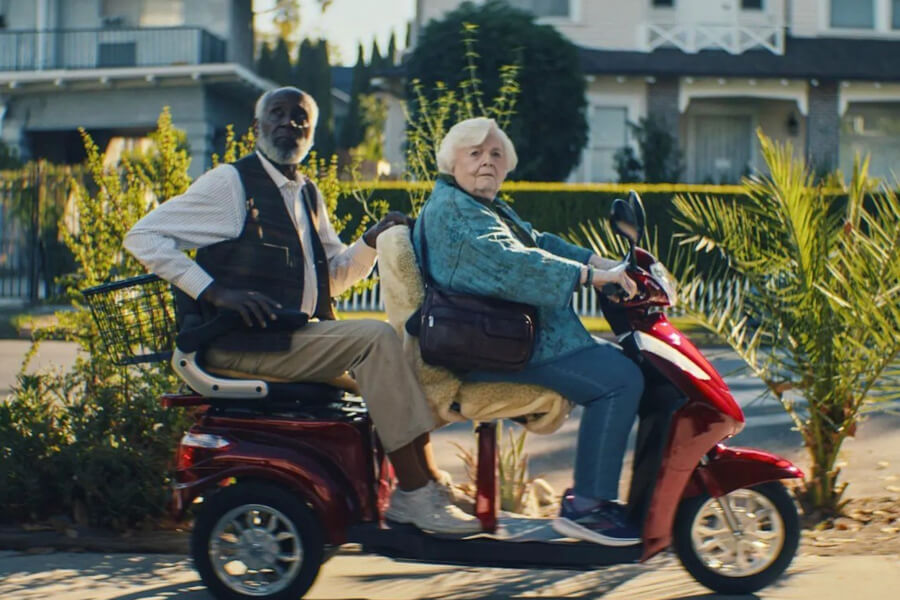
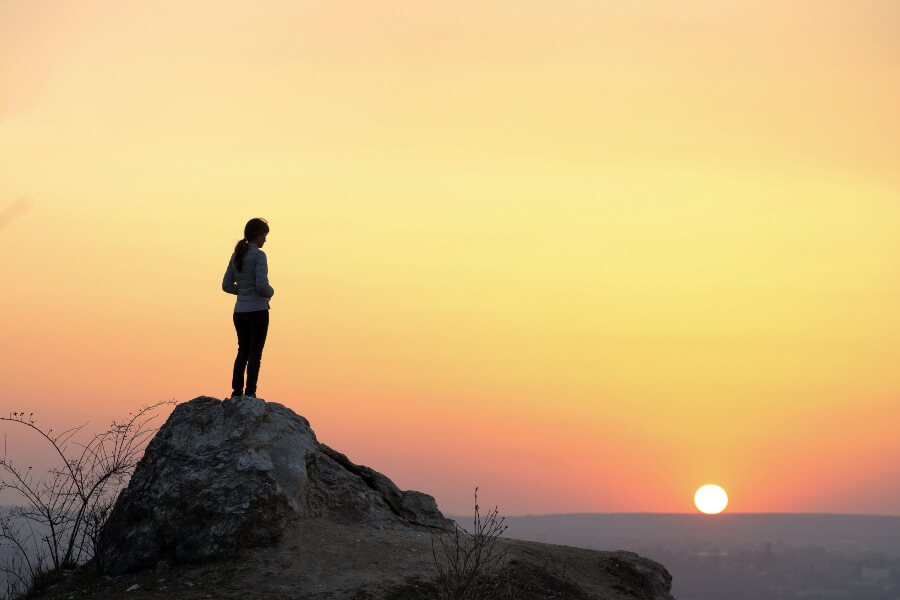



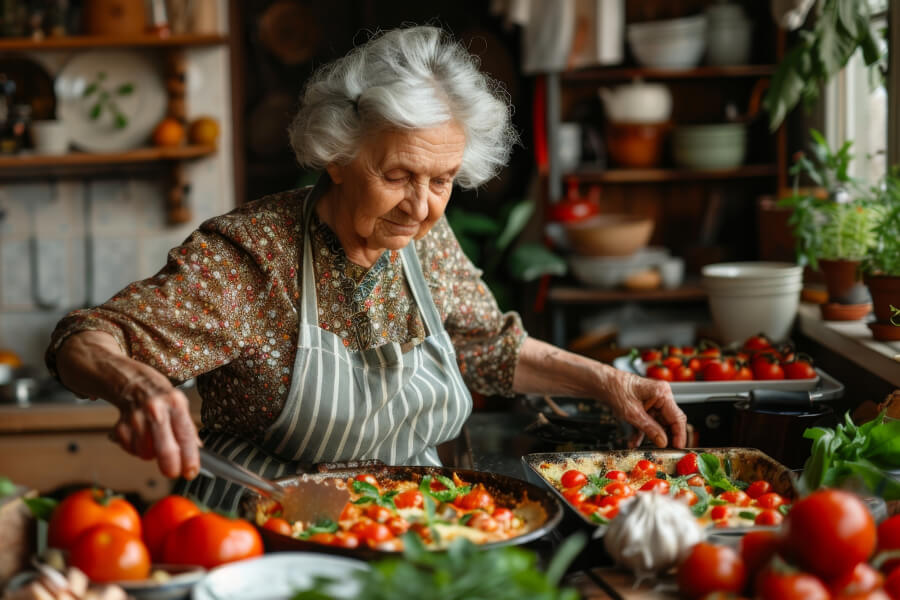

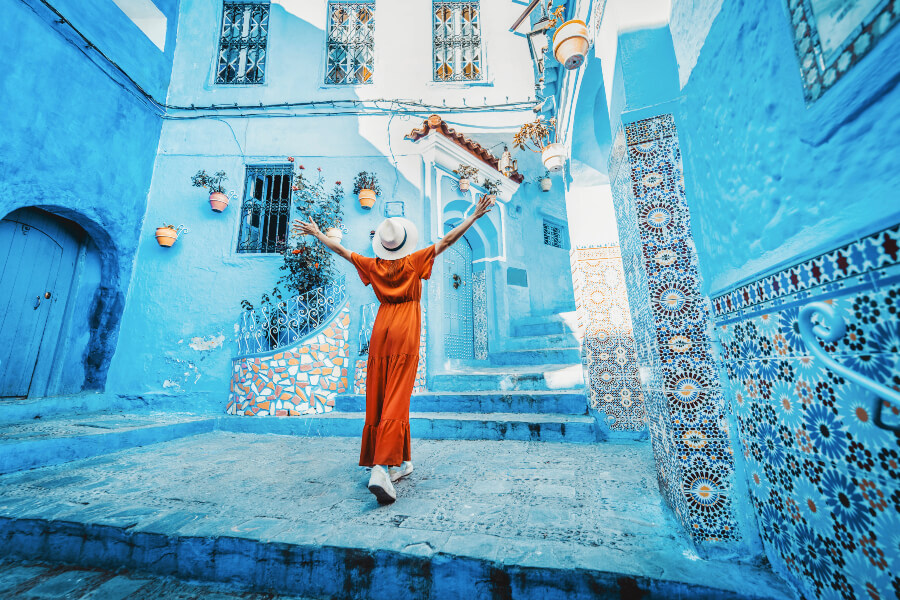


0 Comments